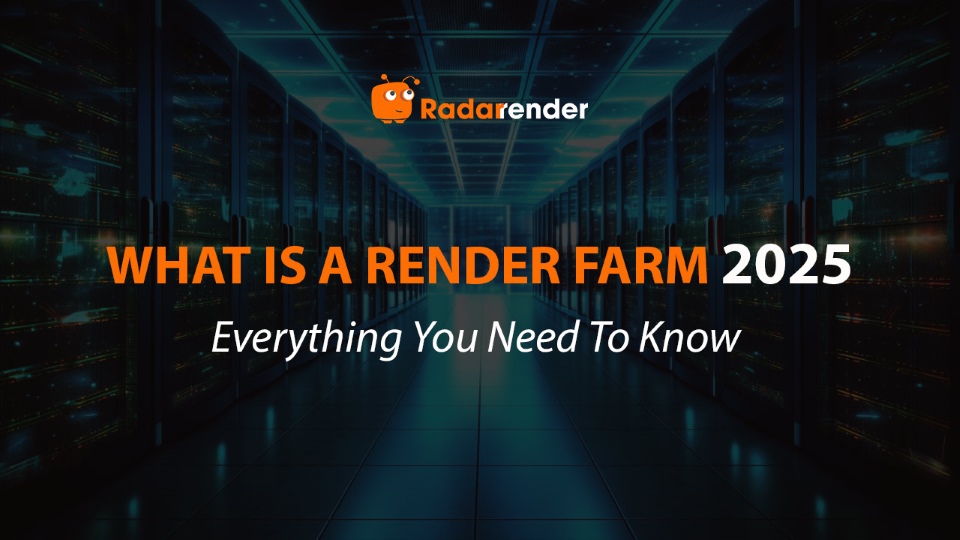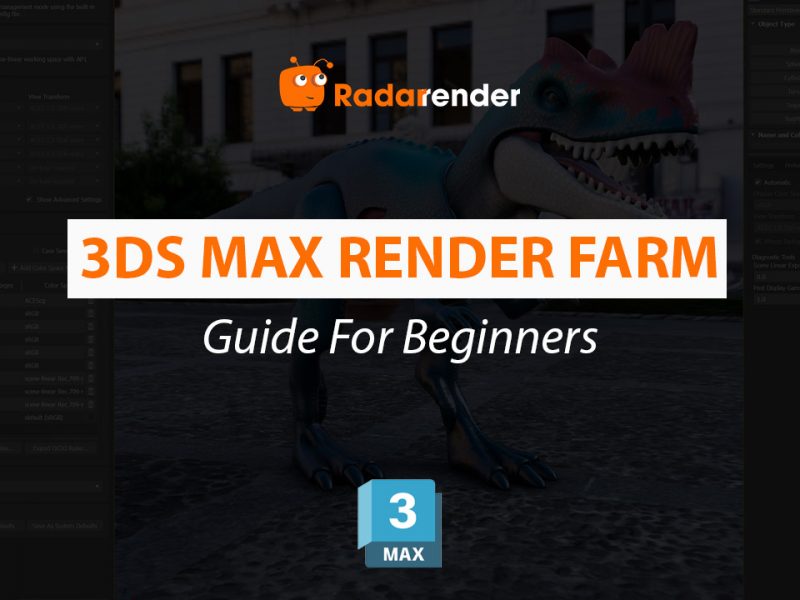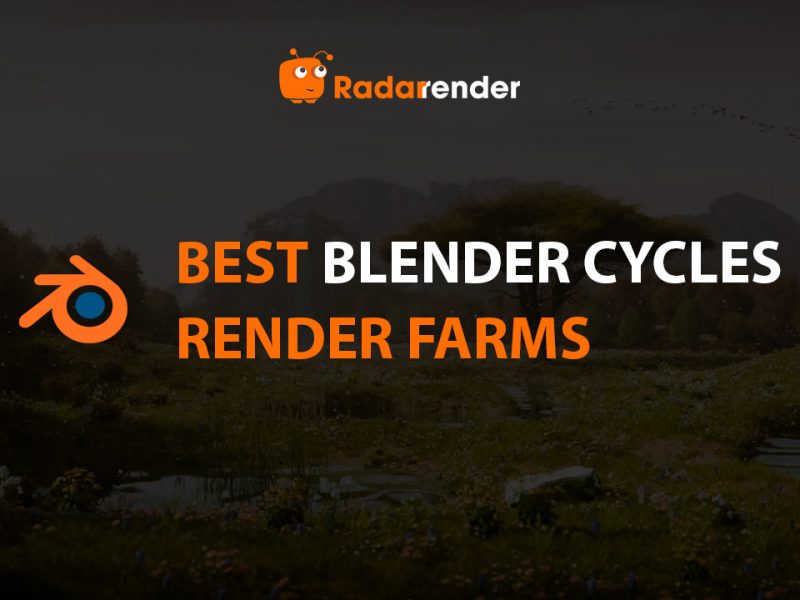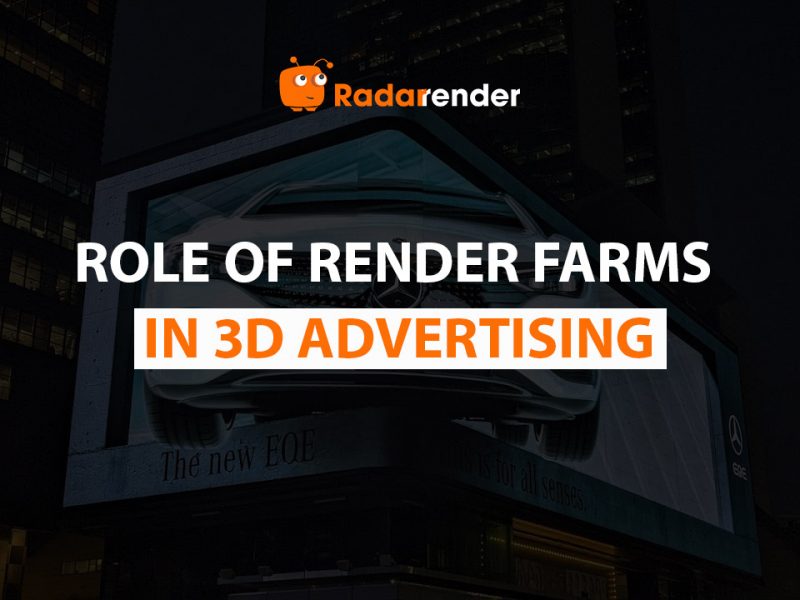What Is a Render Farm? Everything You Need to Know
Rendering is the most crucial step in 3D graphics, in which you turn a 3D model into a photorealistic image using rendering software. Whether you are a freelance 3D artist, a small studio, or a large production company, efficient rendering is key to meeting deadlines and producing high-quality work. Of course, rendering is time-consuming, especially for complex scenes. Have you ever felt crazy because it took so long to render a scene on your old computer? This is where render farms come in – the most effective solution to speed up render times and improve workflow efficiency. But what is a render farm, and how does it work? Let’s find out with Radarrender.
What Is a Render Farm?
A render farm is a network of multiple computers (nodes) that work together to process rendering tasks faster than a single workstation. Instead of relying on just one computer to render an entire project, a render farm distributes the workload across multiple systems, significantly reducing the time it takes to produce the final output.
The time needed to render a scene depends on three factors: the complexity of the scene, the render settings, and the computing resources. Rendering can take seconds, hours, or even months. You know that iconic black hole scene from the blockbuster ‘Interstellar’, each frame took 100 hours to render, and a single second of footage required 100 days. That’s insane, right?
It’s not just a matter of time, it’s also a matter of cost. We know that we can shorten the rendering time by splitting the rendering across multiple machines, so why don’t 3D artists build their own computer systems? Then we think about the cost, building multiple computers with high-end graphics cards costs a fortune. In addition, there are maintenance, warranty, cooling, electricity costs… Moreover, with projects with tight deadlines, building a computer system also seems impossible.
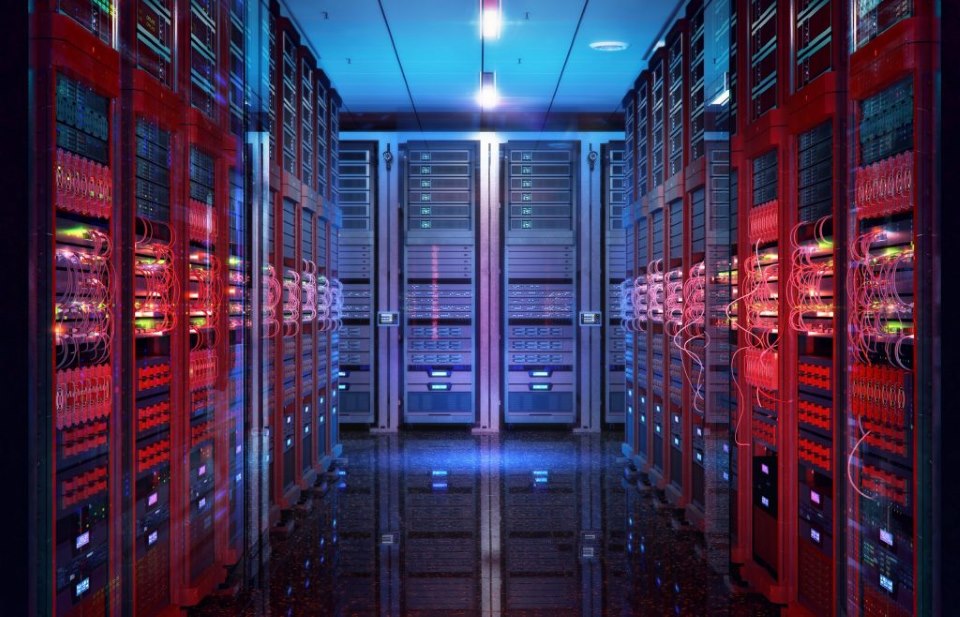
How Does a Render Farm Work?
Render farms work by splitting up rendering tasks and distributing them to multiple computers. The basic process is as follows:
- User uploads project files to the render farm
- Render farm software splits the rendering tasks across multiple nodes.
- Each node processes a portion of the frame or tiles.
- Once all the frames are rendered, they are compiled and sent back to the user.
Render farm software ensures that all textures, simulations, and settings are kept exactly as they are. It also divides the rendering tasks among the render nodes based on their availability and processing power, so there is no bottleneck. Render farms can have hundreds or thousands of render nodes working together to speed up the rendering process. For example, if it takes your computer 5 days to render a project, it will only take 1-2 hours with a render farm.
In addition, these render farms also support many software such as 3ds Max, Cinema 4D, Maya, Blender, Corona, Redshift, V-Ray, Arnold, Octane, etc. But not all render farms support all of these rendering engines. Pay attention and check before registering!
Types of Render Farms
Render farms usually come in many varieties, depending on the conditions and needs of the user. Here are the three main types of render farms:
- On-premise Render Farm: Artists or studios own multiple computers in their studios and use them to render their 3D projects. Of course, this is very convenient and they have full control over their needs, but the huge costs of hardware and software setup, technical staff, energy, and maintenance are also things the studio should consider carefully.
- Commercial Cloud Render Farm: This is the most popular model, where users just need to upload their projects to the cloud, and the render farm will return the desired results. With powerful and huge computing resources, users can render at any time without worrying about maintenance costs, hardware, software, and energy. And fast rendering speed is the biggest advantage. But you should also refer to the prices of these cloud render farms because each one will have a different price, it could be relatively high.
- Traditional Render Farm: Many artists worldwide have a lot of available hardware that they do not use; they will share it. This model will certainly bring a more reasonable price, but obviously, the rendering speed will be limited, and there are many risks, such as downtime or security concerns.
Advantages & Disadvantages of Using a Render Farm
| Advantages |
Disadvantages |
| Faster rendering times – Render on multiple computers reduce waiting times while free up your PC for other tasks. | Cost – Cloud render farms charge based on usage time, and for large projects, the cost can be significant. |
| Cost efficiency – Users save on the cost of setting up and running their own render farm. | Software compatibility – Not all render farms support every software, plugin, or custom script. |
| Easy to use – Render farms have their own software that plugs into 3D software to make the rendering process easier. Just send the render file and receive the result output. | Data security – Render farms all claim to be secure by this or that standard, but obviously, nothing is 100% absolute. |
| Scalability – Handle large projects by dividing workloads across multiple computers. | Potential rendering issues – Software version discrepancies, missing assets, or incorrect settings can lead to errors that require re-rendering. Of course, this costs more money than needed. |
| 24/7 Support – Most render farms have 24/7 technical support and consulting, ready to assist users when they encounter problems. | Availability – Limited numbers of computers in the render farm lead to unavailability, especially during peak times. Users are forced to wait or find another render farm at that time. |
Popular Render Farms
Countless render farms are in the market, but only a few stand out. In 2025, let’s look at the top three most popular render farms today.
Fox Renderfarm

Fox Renderfarm is famous for its safe and secure rendering capabilities, it also supports many different software and plugins (3ds Max, Maya, Cinema 4D, Blender, Unreal Engine, etc). It currently offers hardware CPU 20/24/36 physical cores CPU, GPU 2x Nvidia GTX 1080Ti, RTX 2080Ti/3090/4090/4090D, RAM 64/128/256 GB. With flexible pricing and many attractive promotions such as free trials, educational discounts, seasonal discounts, referral programs… Fox Renderfarm is currently one of the leading render farms in the industry.
GarageFarm
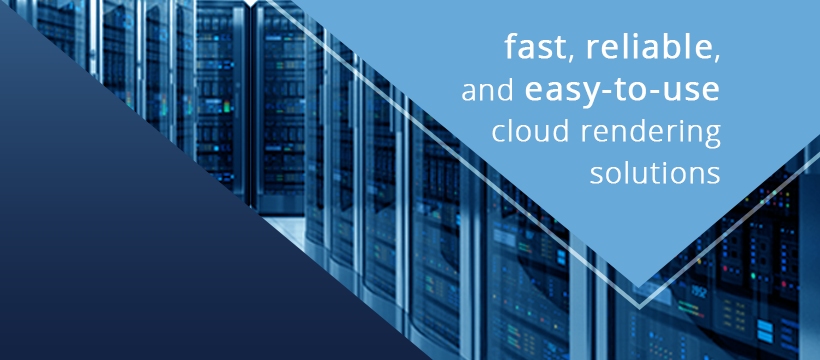
GarageFarm is a SaaS (Service-as-a-Service) render farm that seamlessly integrates with 3D software. 3D artists and studios love it for its automated workflow and efficient 24/7 support. With hardware like Intel Xeon v4 22/44/88 physical cores, AMD Epyc 3rdgen 32 physical cores, 1/2 x Nvidia RTX A5000, 4/8 x Nvidia P100, 1x Nvidia L40s GPUs, and 60/70/86/120/140/240 GB RAM at an affordable price and with support for a wide range of software (3ds Max, Maya, Cinema 4D, SketchUp, Blender, V-Ray, etc), GarageFarm is an ideal choice for 3D artists who want to render without much technical knowledge. It also has a free trial and up to 33% off on Blender rendering, don’t miss it!
iRender
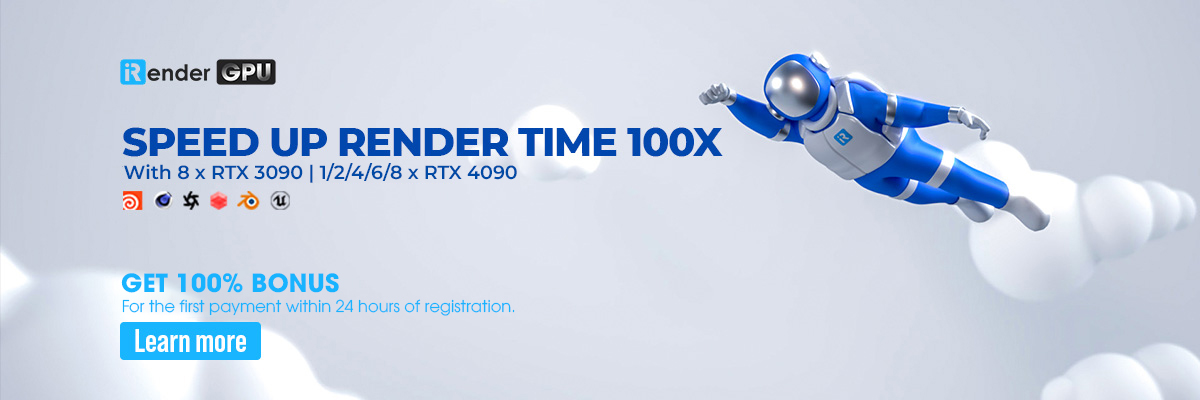
iRender provides high-performance machines with full control of remote servers, allowing users to accelerate rendering with GPUs. In particular, the IaaS (Infrastructure-as-a-Service) model ensures support for all software and plugins of all versions (Cinema 4D, 3ds Max, Maya, Houdini, Redshift, Octane, Blender, etc). iRender currently provides server configurations CPU AMD Ryzen™ Threadripper™ PRO 3955WX, AMD Ryzen™ Threadripper™ PRO 5975WX, GPU 1/2/4/6/8 x Nvidia RTX 3090/RTX 4090, RAM: 256 GB, and Storage (NVMe SSD) 2TB. With prices ranging from $8.2 – $52 per node per hour and free trials, new user promotions, and educational discounts, iRender is a must-have render farm for amateur and professional 3D artists, as well as small to large studios.
What Is The Best Render Farm?
Now that we know what is a rendering farm, so which one is the best? That’s a question that will never be answered, because there is no best render farm, only the most suitable one. When choosing the right render farm, first consider your project requirements and budget. Then consider the render farms to see if they have an easy or complicated workflow, whether they are high or low cost, whether they fit your budget, and the support and fairness of the provider. Don’t forget that most render farms have free trials, so prepare a test file to try them out before you spend your money!
Conclusion
Render farms are a game changer for anyone working in 3D rendering who needs faster processing times, cost savings, and efficiency. Whether you go with an in-house setup or a cloud-based service, choosing the right render farm will save you time and headaches. Have you used a render farm before? Share your experiences in the comments below!
See more: Best Render Farm for 2025



